Readers or “fans” of this blog have sent some pretty crazy stuff to my front door over the past few years, including a gram of heroin, a giant bag of feces, an enormous cross-shaped funeral arrangement, and a heavily armed police force. Last week, someone sent me a far less menacing package: an envelope full of cash. Granted, all of the cash turned out to be counterfeit money, but hey it’s the thought that counts, right?
This latest “donation” to Krebs On Security arrived via USPS Priority Mail, just days after I’d written about counterfeit cash sold online by a shadowy figure known only as “MrMouse.” These counterfeits had previously been offered on “dark web” — sites only accessible using special software such as Tor — but I wrote about MrMouse’s funny money because he’d started selling it openly on Reddit, as well as on a half-dozen hacker forums that are quite reachable on the regular Internet.
Sure enough, the package contained the minimum order that MrMouse allows: $500, split up into four fake $100s and two phony $50 bills — all with different serial numbers. I have no idea who sent the bogus bills; perhaps it was MrMouse himself, hoping I’d write a review of his offering. After all, since my story about his service was picked up by multiple media outlets, he’s changed his sales thread on several crime forums to read, “As seen on KrebsOnSecurity, Business Insider and Ars Technica…”
Anyhow, it’s not every day that I get a firsthand look at counterfeit cash, so for better for worse, I decided it would be a shame not to write about it. Since I was preparing to turn the entire package over to the local cops, I was careful to handle the cash sparingly and only with gloves. At first glance, the cash does look and feel like the real thing. Closer inspection, however, reveals that these bills are fakes.
In the video below, I run the fake bills through two basic tests designed to determine the authenticity of U.S. currency: The counterfeit pen test, and ultraviolet light. As we’ll see in the video, the $50 bills shipped in this package sort of failed the pen test (the fake $100 more or less passed). However, both the $50s and $100s completely flopped on the ultraviolet test. It’s too bad more businesses don’t check bills with a cheapo ultraviolet light: the pen test apparently can be defeated easily (by using acid-free paper or by bleaching real bills and using them as a starting point).
Let’s check out the bogus Benjamins. In the image below, we can see a pretty big difference in the watermarks on both bills. The legitimate $100 bill — shown at the bottom of the picture — has a very defined image of Benjamin Franklin as a watermark. In contrast, the fake $100 up top has a much less detailed watermark. Still, without comparing the fake and the real $100 side by side, this deficiency probably would be difficult to spot for the untrained eye.
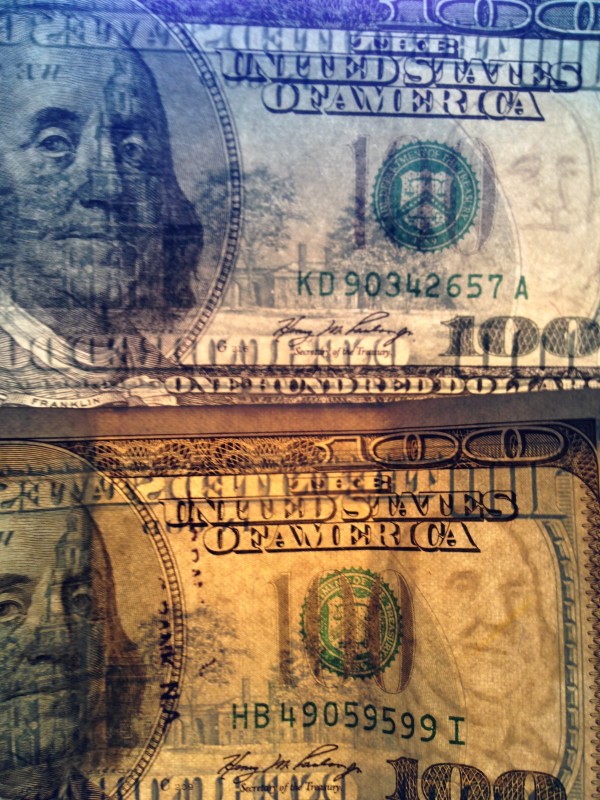
The fake $100 (top) has a much less defined Ben Franklin for a watermark. The color difference between these two bills is negligible, but the legitimate $100 appears darker here because it was closer to the light source behind the bills when this photo was taken.
Granted, hardly any merchants are going to put a customer’s cash under a microscope before deciding whether to accept it as legal tender, but I wanted to have a look because I wasn’t sure when I’d have the opportunity to do so again. One security feature of the $20s, $50s and $100s is the use of “color shifting” ink, which makes the denomination noted in the lower right corner of the bill appear to shift in color from green to black when the bill is tilted at different angles. The fake cash pictured here does a so-so job mimicking that color-shifting feature, but upon closer inspection using a cheap $50 Celestron handheld digital microscope, we can see distinct differences.
Again, using a microscope to inspect cash for counterfeits is impractical for regular businesses in detecting bogus bills, but it nevertheless reveals interesting dissimilarities between real and fake money. Most of those differences come down to the definition and clarity of markings and lettering. For instance, embedded in the bottom of the portraits of Grant and Franklin on the $50 and $100 bills, respectively, is the same message in super-fine print: “The United States of America.” As we can see in the video below, that message also is present in the counterfeits, but it’s quite a bit less clear in the funny money.
In some cases, entire areas of the real bills are completely absent in the counterfeits. Take a close look at the area of the $50 just to the left of Gen. Grant’s ear and you will see a blob of text that repeats the phrase “USA FIFTY” several times. The image on the left shows a closeup of the legitimate $50, while the snapshot on the right reveals how the phony bill completely lacks this feature.
Similarly, the “100” in the lower left hand corner of the $100 bill is filled in with the words “USA 100,” as we can see in the close-up of a real $100, pictured below left. Magnification of the same area on the phony $100 note (right) shows that this area is filled with nothing more than dots.
Like most counterfeit currency, these bills look and feel fairly real on casual inspection, but they’d quickly be revealed as fakes to anyone with a $9 ultraviolet pen light or a simple magnifying glass.
If someone sticks you with a counterfeit bill, don’t try and pass it off on someone else; the penalties for passing counterfeit currency with intent to defraud are severe (steep fines and up to 15 years in prison). Instead, contact your local police department or the nearest U.S. Secret Service field office and hand it over to them.



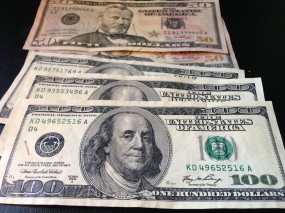
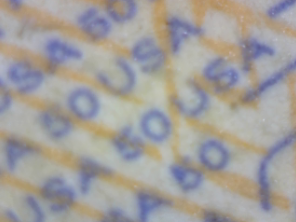
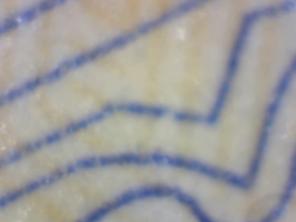
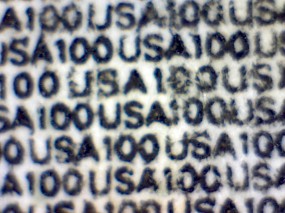
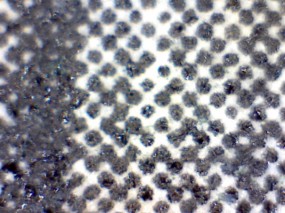

Gee Brian Looks like you just need to write about something you do want and then sit back and wait for the mail man!
Thanks for sharing the experience, as always an educating and entertaining read.
Perhaps you can now get some fake currency from other parts of the world, come on crooks, chip in and start mailing those samples today!
Another Target style breach. To hell with Home Depot, I refuse to shop there (I wasn’t compromised) because of their incompetency. lack of security. These stores are trashing themselves. Many now hate
Target and refuse to shop there anymore. Try going to ACE instead or use cash. Lowes could be next. Go back to writing checks or use cash, prepaid gift cards.
Checks are less safe than credit or debit cards – they contain more information on them and can be altered to conduct fraud. If your card is breached they get your number, name, and PIN. They have no other details. You aren’t liable for the charges and you just have to wait for a new card. Cash can be lost, stolen, or as this article points out counterfeited. Cards are safe. ACE could just as easily have a breach – either themselves or their credit card processor.
great content, thanks for sharing as always! I’ve always wondered what real vs. fake would look like and you have some pretty nice tips. keep up the great work.
I literally just got off the phone with my Credit Union and had a card locked out. This card hardly ever gets used which prompted me to check the credit card history and sure enough
05/29/2014 -THE HOME DEPOT
I had 12 charges on this account in the past 14 months and 12 of them are the local YMCA.
Last sentence should read: “I had 14 charges on this account in the past 12 months and 12 of them are the local YMCA”
Can we assume HD remedied this breach, if one did occur, in the past few weeks or is this still an active problem?
Dear Mr. Krebs
You probably know this but one other test that works well for most counterfeits is the scratch test. Scrape a fingernail over the darkest part of the portrait. If it feels like a small file it is a good indicator of a real bill. If smooth it is either fake or an extremely worn note. Our real currency is printed under high pressure leaving the small ridges of ink.
Would be interesting to see an IR test on the back of these fake bills. Most currency (US and others) have parts which do not show up when viewed with an IR camera (viewing the bills in the dark with a camcorder with night shot turned on works well to see this). I think 5’s on up have different strips on the back side which appear blank under IR.